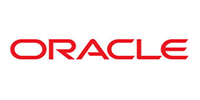Description
You will learn how to implement and administer the Oracle11g DBMS under optimal conditions. Among the main points covered are the architecture of the DBMS, installation, as well as the management of the instance, databases, disk spaces, objects, undo data, users and access rights .
Who is this training for ?
For whom ?
Oracle database administrators, application administrators and consultants.
Prerequisites
Training objectives
Training program
- L'architecture d'Oracle 11g et installation
- The files constituting the database.
- The structure of data storage.
- The memory areas.
- The processes of background.
- Transaction management.
- Multi-threaded Server architecture.
- The tasks of an administrator.
- Installation of the SDBGR.
- Prerequisites depending on the system.
- Installation tasks under Unix.
- The OFA architecture.
- Usage of Oracle Universal Installer (YES).
- Advanced installation in silent mode.
- Enterprise Manager Configuration Assistant.
- The architecture of Automatic Storage Management (ASM).
- Exercise: Discovery of the structure of the Oracle database.
- Installation of Oracle 11g.
- Instance management and network configuration
- Identification control methods.
- Instance configuration with PFILE or SPFILE.
- Instance startup states.
- Options for stopping an instance.
- Views: dynamic, data dictionary.
- Trace files and alert files.
- Network configuration.
- Oracle Net Services configuration.
- The " listener file.
- ora ".
- Client configuration.
- Network configuration and name resolution by LDAP.
- Exercise: Modifying the database settings.
- Create the SPFILE file from a PFILE file.
- Configuring SQL*Net.
- Creating and deleting databases
- Understand and use Oracle Managed Files (OMF).
- The Database Configuration Wizard.
- Exercise: Creating a new database from scripts generated by DBCA.
- Manage control file and manage log files
- The functions of the control file.
- Its contents.
- Multiplex the control file.
- Manage log files.
- The role of log files.
- Manage, multiplex and archive log files.
- Exercise: Multiplex the control file, visualize its content.
- Change logging file group size.
- Put the database into ARCHIVELOG mode.
- Logical disk spaces
- Types of tablespaces.
- The creation of a permanent, temporary and undo tablespace.
- The extension of a file.
- Enlarging and moving a tablespace.
- Exercise: Creating different tablespaces, defining the default permanent, temporary and undo tablespaces from the base.
- Database Structures
- The storage structure.
- The tablespace storage parameters.
- The use of extents.
- The structure of a database block.
- Storage of BLOB or CLOB type data.
- Statistics and table storage information.
- The High Water Mark and the block chaining.
- Storage reorganization and unused space.
- Manage cancellation data
- Undo segments.
- Configure the retention period for undo information.
- Ensure retention of undo information.
- Use the Undo wizard.
- Flashback Database.
- Flashback Database architecture.
- Flashback deleted tables.
- Flashback Query, Version Query and Transaction Query.
- Exercise: Changing the way undo information is retained.
- Object administration
- Create and use directory objects.
- External and temporary tables.
- Index: B
- tree, bitmap and based on a function.
- Partitioning tables, indexes.
- Materialized views.
- Exercise: Creating indexes B
- tree, bitmap index and a materialized view.
- User management and security
- Creating a user.
- Expiration and logging of passwords.
- System and object privileges.
- Roles.
- Profiles.
- Exercise: Configuring user rights.
- Supplements
- Backups and restorations.
- ARCHIVELOG and NOARCHIVELOG modes.
- Base backup stopped and database open.
- Manage the AWR repository.
- Use the ADDM monitor.
- Set alert thresholds.
- Use server-generated alerts.
- Use tasks
- Unblock user sessions.
- Collection of statistics.
- Presentation of Export and Import Datapump.






